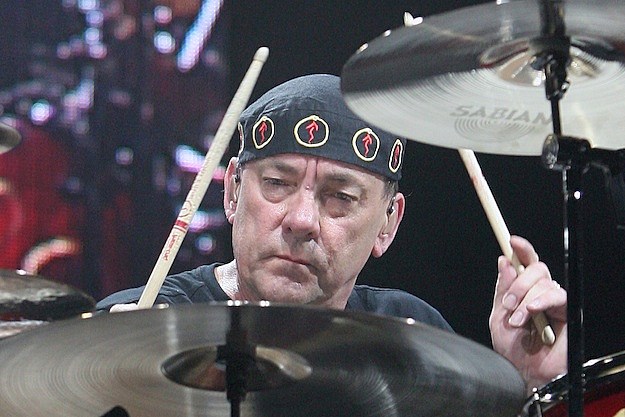

He's not the kind of teacher who teaches you how to play the drums, he teaches you how to dance on the drums. That's what his coaching was all about - it was all physical, not musical. We became lifelong friends and started working together to loosen up my playing.

"I met Freddie around that same time of the recording of the Buddy Rich tribute. I said, 'What happened to you?' It was so beautiful, so musical, so crisp and elegant. "In the mid-80s we worked together on a Jeff Berlin record so I'd seen Steve play and knew that he was great, but when we were doing the Buddy Rich tribute he came in to set up and just started playing. It was in this spirit that after 30 years behind the kit he opted to study with the great Freddie Gruber in the mid-'90s, “I was starting to feel stiff and that's when I studied with Freddie Gruber because I saw Steve Smith play." I know people give me that respect so I feel I have to earn it."

"The hunger for improvement and exploration and all that really does derive from the acclaim. "As a musician it's my responsibility to get better and if people are admiring the work I do then that's even more inspiration to improve and to take it up a notch. There is nothing I would rather have than the respect of other musicians for what I do Neil Peart "There is nothing I would rather have than the respect of other musicians for what I do, but respect is something you have to earn continually. In 2014 he told us, “It’s been my life’s tangent”. Neil Ellwood Peart OC ( / prt / Septem January 7, 2020) was a Canadian and American musician, best known as the drummer and primary lyricist of the rock band Rush.

Peart also made instructional DVDs: “A Work in Progress,” about composing drum parts, and “Anatomy of a Drum Solo.” He was an avid motorcyclist, and wrote six books about his travels and music.Neil’s pursuit of excellence was never-ending. Peart, Max Roach, Bill Bruford, Steve Gadd and Omar Hakim. Ask just about any rock drummer who their influences are and chances are Rushs Neil Peart will be high on the list. Peart paid tribute to one of his influences when he produced a two-volume compilation, “Burning for Buddy,” pairing the Buddy Rich Big Band with jazz and rock drummers including Mr. 4 in its 2016 list of “100 Greatest Drummers of All Time.” Mr. The band stated that “Clockwork Angels,” its 2012 album, “features lost cities, pirates, anarchists, exotic carnival, and a rigid Watchmaker who imposes precision on every aspect of daily life.” It was turned into a science-fiction novel by Kevin J. Rush’s music altered through the decades - embracing synthesizers and electronics, reclaiming power-trio muscle - but never shied away from musical challenges or grand verbal conceits. “Moving Pictures,” which includes the song “Tom Sawyer,” was the band’s best-selling album, with four million sales in the United States.īy then, Rush had established itself on the arena circuit, where it persisted until its last tour in 2015. Rush built an audience through extensive touring and increasing FM radio airplay, and its early 1980s albums, “Permanent Waves” (1980) and “Moving Pictures” (1981), both reached the Top Five in the United States. He expanded the standard drum kit with double bass drums and a wide array of cymbals, wood blocks, bells and timpani, and he eventually added electronic percussion to his arsenal when it suited the music. But as his playing developed, he quickly earned a reputation for precisely conceived, meticulously executed drum parts. Peart grew up as a fan of loud, flashy drummers like Keith Moon, Gene Krupa, John Bonham and Ginger Baker, and he was known for hitting his drum kit hard. “A lot of times you just think of a lyrical idea as a good musical vehicle,” he said. He became the band’s lyricist, he said in 1980, “just because the other two guys didn’t want to write lyrics.” He added that he considered the band’s lyrics “secondary” to the music. But in 1972 he returned to Canada, where he worked at his father’s farm-equipment dealership and played with local bands. “I’d come home every day from school and play along with the radio.”Īfter playing in rock bands during his teens, he moved to England at 18. He hadn’t been interested in early piano lessons, but at 13 he began taking drum lessons and found that drumming was “pure pleasure,” he told the magazine.


 0 kommentar(er)
0 kommentar(er)
